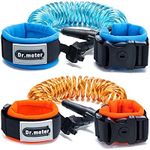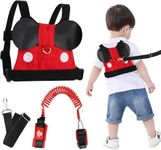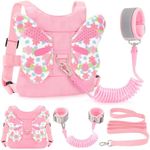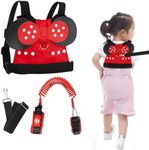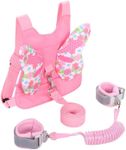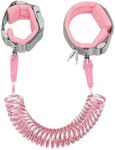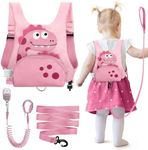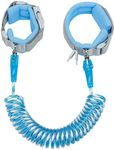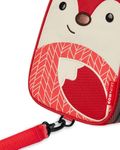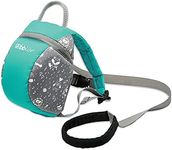Buying Guide for the Best Child Leashes
Choosing the right child leash is all about balancing safety, comfort, and practicality. These products are designed to help keep your child close in busy or potentially dangerous environments, like crowded streets, airports, or shopping centers. When picking a child leash, it's important to consider how and where you'll use it, your child's age and temperament, and your own comfort with different styles. The right choice will make outings less stressful and give your child a bit of freedom while keeping them safe.Type (Wrist, Harness, Backpack)The type of child leash refers to how the leash attaches to your child. Wrist leashes connect to both your and your child's wrists, harness leashes wrap around the child's torso, and backpack leashes are small backpacks with an attached leash. Wrist leashes are simple and lightweight, best for older toddlers who don't mind wearing them. Harness leashes offer more security and are harder for a child to slip out of, making them good for younger or more active children. Backpack leashes add a fun element and can carry small items, but may be bulkier. Consider your child's age, comfort, and how much control you want when choosing the type.
Length of LeashLeash length determines how much freedom your child has to move away from you. Shorter leashes (about 2-3 feet) keep your child very close, which is ideal for crowded or high-risk areas. Medium lengths (3-5 feet) allow a bit more independence while still keeping your child within arm's reach. Longer leashes (over 5 feet) are best for open spaces where you want to give your child more room to explore safely. Think about where you'll use the leash most often and how much space you feel comfortable giving your child.
Material and ComfortThe material of the leash and any straps or harnesses affects both comfort and durability. Soft, padded materials are gentler on your child's skin and less likely to cause irritation, especially if worn for longer periods. Breathable fabrics are better for warm weather. Strong, durable materials ensure the leash won't break easily. If your child has sensitive skin or will wear the leash often, prioritize comfort and softness. For rougher use or older, stronger children, look for sturdier materials.
AdjustabilityAdjustability refers to how well the leash or harness can be resized to fit your child as they grow. Adjustable straps on harnesses or backpacks ensure a snug, secure fit and can extend the product's usefulness as your child gets bigger. If you want a product that will last through different stages or be used by more than one child, look for good adjustability.
Safety FeaturesSafety features can include secure buckles, child-proof locks, reflective strips for visibility, and breakaway mechanisms in case of emergency. These features help prevent accidental escapes, make the leash safer to use in low-light conditions, and add peace of mind. If you'll be out at night or in busy places, prioritize leashes with extra safety features.
Ease of UseEase of use covers how simple it is to put on, take off, and adjust the leash. Some designs are quick and intuitive, while others may be more complicated or require more time to secure. If you'll be using the leash frequently or need to put it on a wiggly child, look for a design that's easy to manage.
